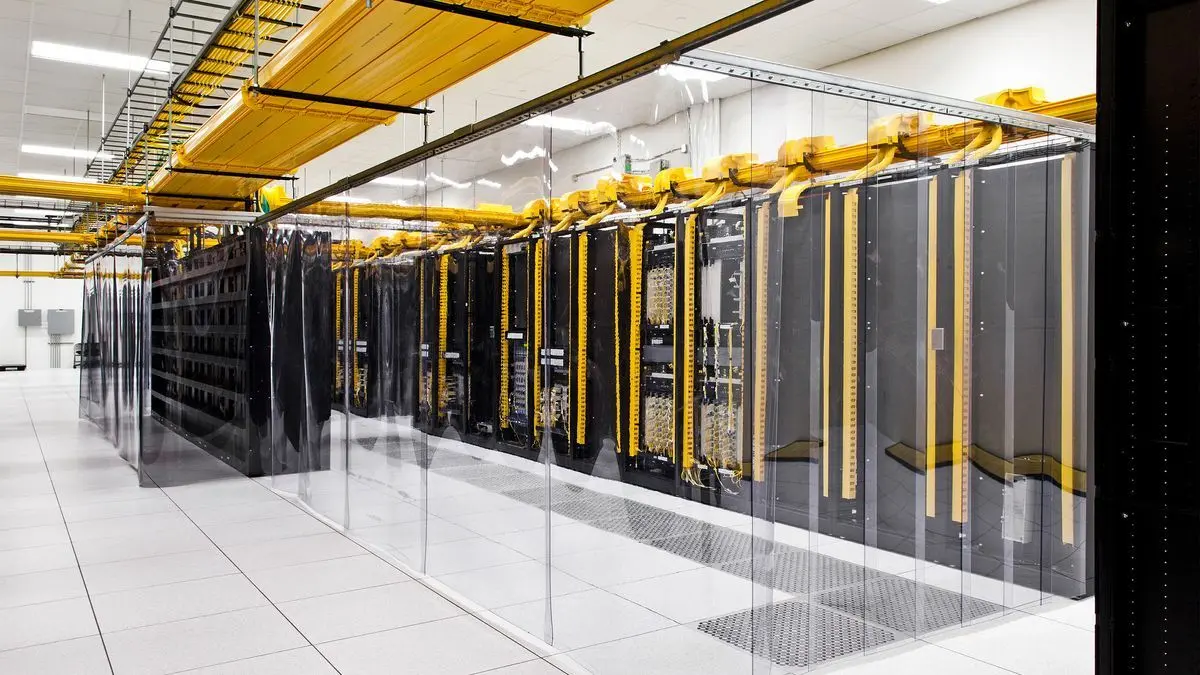China Dives into Underwater Data Centers: A Sustainable Solution for AI's Growing Demands
2 Sources
2 Sources
[1]
China to sink servers off Shanghai in underwater data center trial
A Chinese company is preparing to submerge a capsule of servers in the sea off Shanghai in mid-October. The project aims to curb the huge energy costs of traditional data centers and marks one of the world's first commercial services of its kind. The world's websites and apps rely on physical servers. Artificial intelligence has accelerated demand, creating an urgent need for more efficient infrastructure. Data centers on land use energy-heavy cooling systems. By contrast, ocean currents can naturally regulate the temperature of submerged servers.
[2]
China trials 'energy-saving' underwater data centres
To cut energy use by data centres, a Chinese firm plans to place a server pod underwater near Shanghai. The yellow capsule aims to solve the high power demands of data centres, which heat up during use. Rising AI use is pushing up global demand for data storage and computing infrastructure. Power-hungry data centres run hot, so one Chinese company is planning to submerge a pod of servers in the sea off Shanghai with hopes of solving computing's energy woes. On a wharf near the city, workers were finishing off the large yellow capsule -- a foray into alternative tech infrastructure that faces questions over its ecological impact and commercial viability. The world's websites and apps rely on physical data centres to store information, with growing use of artificial intelligence contributing to skyrocketing demand for the facilities. "Underwater operations have inherent advantages," said Yang Ye of maritime equipment firm Highlander, which is developing the Shanghai pod with state-owned construction companies. Undersea servers are kept at a low temperature by ocean currents, rather than the energy-intensive air cooling or water evaporation required by centres on land. The technology was trialled by Microsoft off the coast of Scotland in 2018, but the Chinese project, to be sunk in mid-October, is one of the world's first commercial services of its kind. It will serve clients such as China Telecom and a state-owned AI computing company, and is part of a broader government push to lower data centres' carbon footprint. "Underwater facilities can save approximately 90 percent of energy consumption for cooling," Yang, vice president of Highlander, told AFP. Projects like this are currently focused on showing "technological feasibility", said expert Shaolei Ren from the University of California, Riverside. Microsoft never built commercially on its trial, saying after retrieving its pod in 2020 that the project had been successfully completed. Significant construction challenges and environmental concerns have to be overcome before underwater data centres can be deployed on a mass scale, said Ren. In China, government subsidies are helping -- Highlander received 40 million yuan ($5.62 million) for a similar 2022 project in Hainan province that is still running. Technical challenges "The actual completion of the underwater data centre involved greater construction challenges than initially expected," said Zhou Jun, an engineer for Highlander's Shanghai project. Built onshore in separate components before being installed in the sea, it will draw nearly all its power from nearby offshore wind farms. Highlander says that more than 95 percent of the energy used will come from renewable sources. The most obvious challenge in placing the structure under the waves is keeping its contents dry and safe from corrosion by salt water. The Chinese project addresses this by using a protective coating containing glass flakes on the steel capsule that holds the servers. To allow maintenance crews access, an elevator will connect the main pod structure to a segment that remains above the water. Ren from UC Riverside said laying the internet connection between an offshore data centre and the mainland was a more complex process than with traditional land servers. Researchers at the University of Florida and the University of Electro-Communications in Japan have also found that sub-marine data centres can be vulnerable to attacks using sound waves conducted through water. Ecological unknowns Technical hurdles aside, the warming effect of underwater data centres on the surrounding water has raised questions about the impact on marine ecosystems. Andrew Want, a marine ecologist at the University of Hull, said the heat emitted could in some cases attract certain species while driving away others. "These are unknowns at this point -- there's not sufficient research being conducted yet," he said. Highlander told AFP a 2020 independent assessment of the company's test project near Zhuhai, in southern China, indicated that the surrounding water stayed well below acceptable temperature thresholds. However, Ren warned that scaling up centres would also scale up the heat given off. He stressed that "for megawatt-scale data centres underwater, the thermal pollution problem needs to be studied more carefully". Offshore facilities can complement standard data centres, Ren suggested. "They're probably not going to replace existing traditional data centres, but can provide service to some niche segments."
Share
Share
Copy Link
A Chinese company is set to launch an underwater data center off Shanghai's coast, aiming to reduce energy consumption and meet the increasing demand for data storage driven by AI advancements.

China's Underwater Data Center Initiative
In a groundbreaking move to address the escalating energy demands of data centers, a Chinese company is preparing to submerge a capsule of servers off the coast of Shanghai in mid-October. This innovative project aims to harness the natural cooling properties of ocean currents, potentially reducing energy consumption for cooling by up to 90% compared to traditional land-based data centers
1
2
.The Driving Force: AI and Increasing Data Demands
The surge in artificial intelligence (AI) applications has accelerated the demand for data storage and computing infrastructure globally. This has created an urgent need for more efficient and sustainable solutions to power the world's websites and apps. Traditional data centers on land rely on energy-intensive cooling systems, contributing significantly to their carbon footprint
1
2
.Technical Innovations and Challenges
The underwater data center, developed by maritime equipment firm Highlander in collaboration with state-owned construction companies, features a large yellow capsule designed to withstand the harsh marine environment. Key technical aspects include:
- A protective coating containing glass flakes to shield the steel capsule from saltwater corrosion.
- An elevator system connecting the main pod to an above-water segment for maintenance access.
- Power supply primarily from nearby offshore wind farms, with over 95% of energy coming from renewable sources
2
.
However, the project faces significant challenges, including complex internet connectivity between offshore and mainland facilities, and potential vulnerability to underwater sound wave attacks
2
.Related Stories
Environmental Considerations and Future Prospects
While underwater data centers offer promising energy-saving benefits, their ecological impact remains a subject of debate. The heat emitted by these facilities could potentially affect marine ecosystems, attracting certain species while repelling others. Highlander claims that independent assessments of their previous test projects showed acceptable temperature thresholds in surrounding waters
2
.Global Context and Commercial Viability
This initiative follows Microsoft's similar trial off the coast of Scotland in 2018, positioning China's project as one of the world's first commercial services of its kind. The underwater data center will serve clients such as China Telecom and a state-owned AI computing company, aligning with the Chinese government's broader push to reduce data centers' carbon footprint
2
.As the world grapples with the environmental impact of rapidly expanding digital infrastructure, underwater data centers present a potential solution. However, experts suggest that these facilities may complement rather than replace traditional data centers, serving niche segments of the market while research continues to address scaling challenges and long-term ecological effects
2
.References
Summarized by
Navi
[1]
Related Stories
AI Data Centers: The Hidden Environmental Cost and Innovative Cooling Solutions
26 Sept 2025•Technology

China's Ambitious Plan to Create a National Computing Power Network Faces Challenges
24 Jul 2025•Technology

Nvidia H100 GPUs Set to Launch Into Orbit as Startups Pioneer Space-Based AI Data Centers
22 Oct 2025•Technology

Recent Highlights
1
Google launches Gemini 3 Flash as default AI model, delivering speed with Pro-grade reasoning
Technology

2
OpenAI launches GPT Image 1.5 as AI image generator war with Google intensifies
Technology

3
OpenAI launches ChatGPT app store, opening doors for third-party developers to build AI-powered apps
Technology





